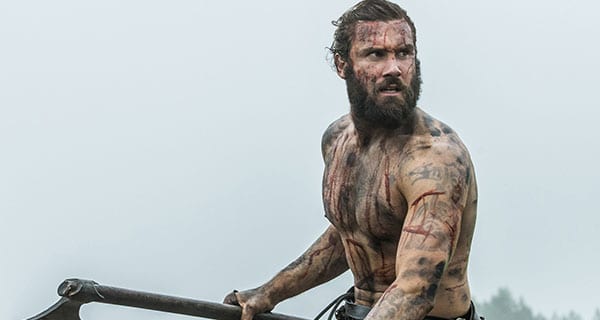 Vikings returns to TV screens on Nov. 28, courtesy of the History Channel. The Canadian-Irish co-production will embark on the second half of its fifth season and there’ll be more to come after that. If you like historical drama with interesting characters and plenty of action, this is good news.
Vikings returns to TV screens on Nov. 28, courtesy of the History Channel. The Canadian-Irish co-production will embark on the second half of its fifth season and there’ll be more to come after that. If you like historical drama with interesting characters and plenty of action, this is good news.
Vikings’ storyline is inspired by Norse mythology and historical events. Set in the early medieval period, the narrative has been mainly located in Scandinavia, England and France. And while it takes plenty of liberties with history, its virtues outweigh its faults.
For me, the most interesting character is Rollo, who is loosely based on an historical figure. As the man who founded what we call Normandy, Rollo was a significant player by anyone’s definition.
Viking raiders were drawn to places with navigable rivers that opened to the sea and provided access to profitable plunder. A Viking chieftain who didn’t bring home the booty would soon find himself displaced, perhaps even dead. Results really mattered.
One prime raiding destination was the west coast of France. The Seine was navigable and the pickings en route to Paris were promising.
The Vikings took their first whack at Paris in 845. Sailing unopposed up the Seine, they stopped in Rouen, where they “did what they wanted, captured and killed people of both sexes, devastated monasteries, plundered and burned churches.”
Then, moving further upriver, they encountered King Charles the Bald’s Frankish army, which had been divided into two parts, one on each side of the river. From Charles’ perspective, splitting the forces was a bad move.
After turning on and defeating one of the Frankish contingents, the Vikings hanged 111 prisoners “in plain sight of the other contingent.” This had the desired effect, prompting significant Frankish desertions and allowing the fleet to sail unimpeded to an undefended Paris. Once there, the city was plundered before the raiders were eventually bought off with a hefty ransom.
While episodes like this fit the perception of violent and bloodthirsty Vikings, medieval historian Anders Winroth makes a relevant point: Large-scale violence wasn’t uniquely Viking. Not by a long stretch.
For instance, the famous Charlemagne – often honoured as an inspiration for the modern European Union – had 4,500 Saxons beheaded on a single day in 782. But unlike the Vikings, he had admiring publicists to spin his reputation. The side that writes the history always has an advantage.
The real Rollo was probably born in the 860s and named Hrolf after his maternal grandfather. There’s a dispute as to whether he was Norwegian or Danish, although the balance of opinion leans towards the former.
He was hanging around the lower Seine valley in the guise of a raider-cum-settler when another Frankish king, Charles the Simple, made him an offer. In return for a grant of all the valley lands between the rivers Epte and Bresle, Hrolf would become the king’s loyal vassal. Normandia – the land of the Norsemen – was thus born.
The deal, formalized in the 911 Treaty of Saint-Clair-sur-Epte, required Hrolf to accept Christian baptism. And in an early version of the sentiment that “Paris is worth a mass,” the eminently practical Hrolf acquiesced. After all, power and possessions were the things that mattered and your private beliefs were your own business.
It’s estimated that several thousand of Hrolf’s warriors went along with the change. In effect, they became a new officially recognized ruling class. And the scribes who recorded the event translated Hrolf to the Latinate Rollo.
This new aristocracy proved supremely capable of surviving and thriving. They could take things they found and adapt them to their own purposes.
Within three or four generations, they became French-speaking Christian proselytizers who exchanged Norse institutions for hierarchical feudalism and sea roving for cavalry warfare. In addition, they acquired mastery of castle building. Throughout, they retained the Viking characteristics of restlessness and recklessness, craftiness and cunning, fortitude and fearlessness.
In 1066, they spread their dominion to England, a conquest that’s often described as shifting England’s outward orientation from Scandinavia to France.
But there’s another way of looking at it.
Perhaps the conquest just exchanged one set of Viking interlopers for another. Instead of the native Scandinavian version, the English now had to deal with Frenchified Vikings.
The more things change …
Troy Media columnist Pat Murphy casts a history buff’s eye at the goings-on in our world. Never cynical – well, perhaps just a little bit.
The views, opinions and positions expressed by columnists and contributors are the author’s alone. They do not inherently or expressly reflect the views, opinions and/or positions of our publication.

